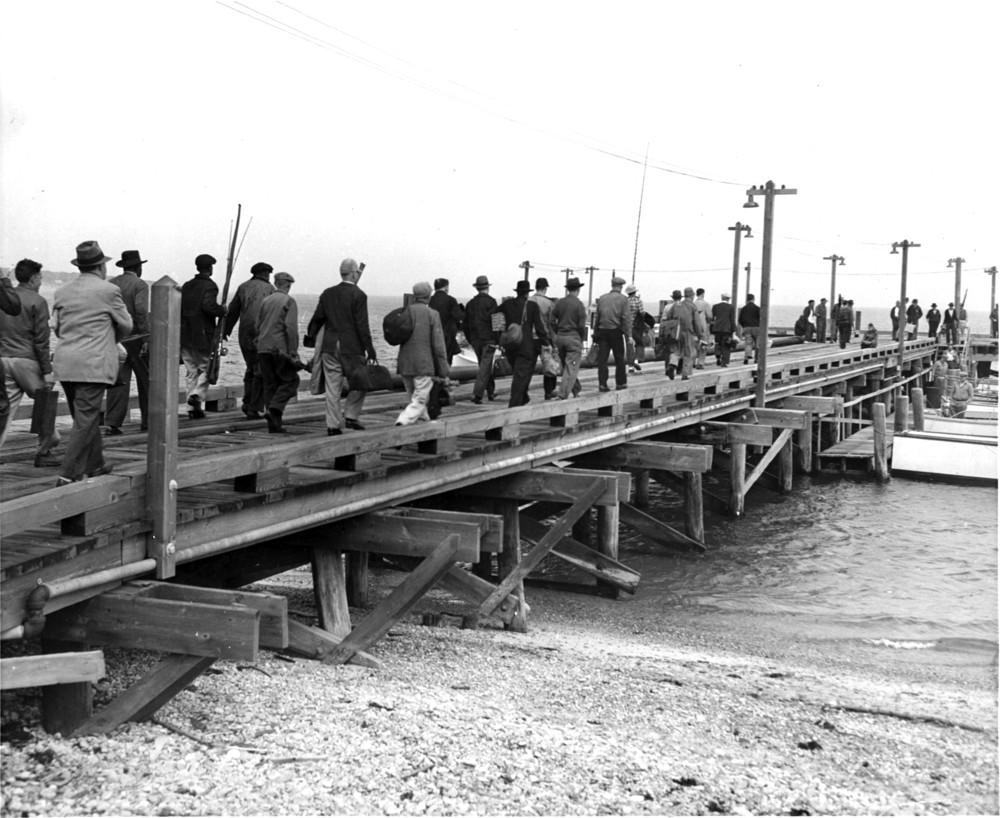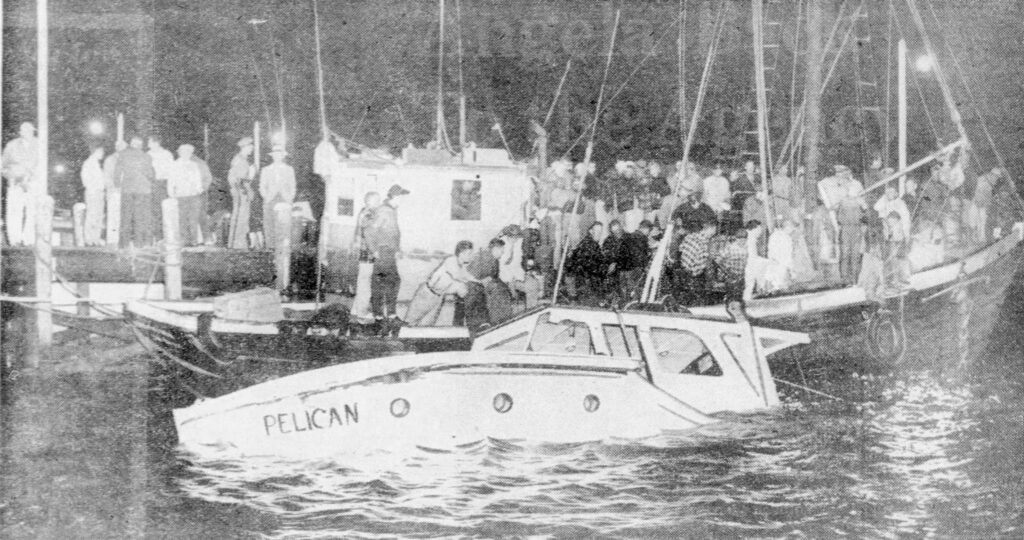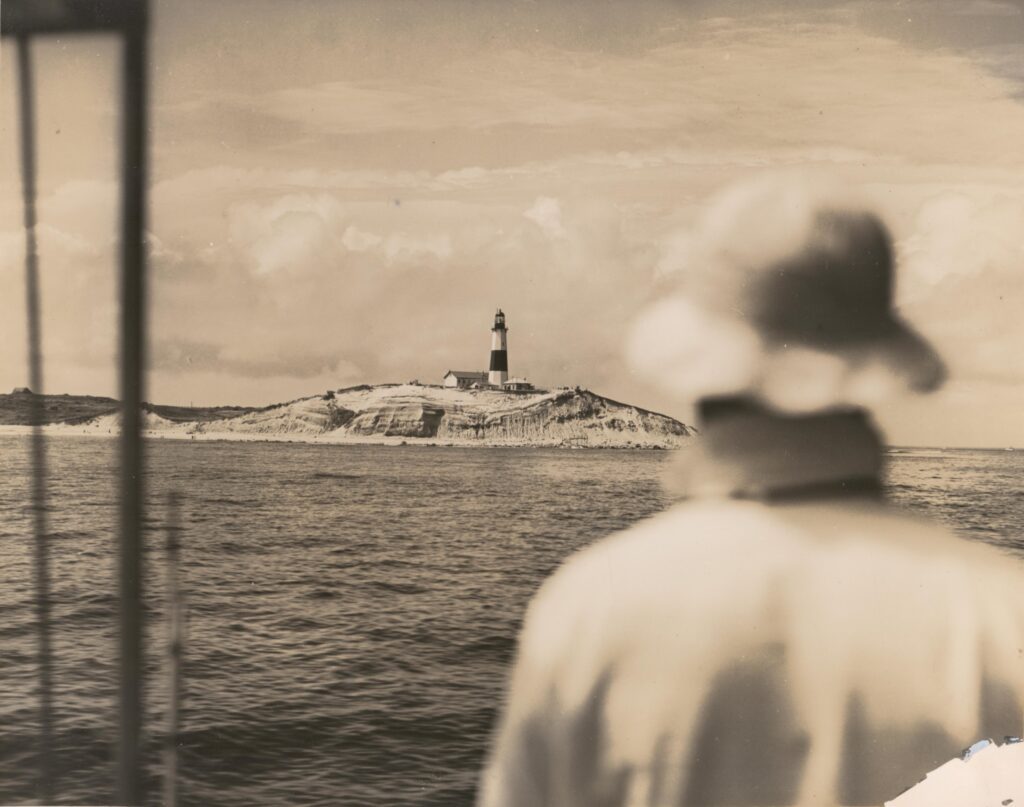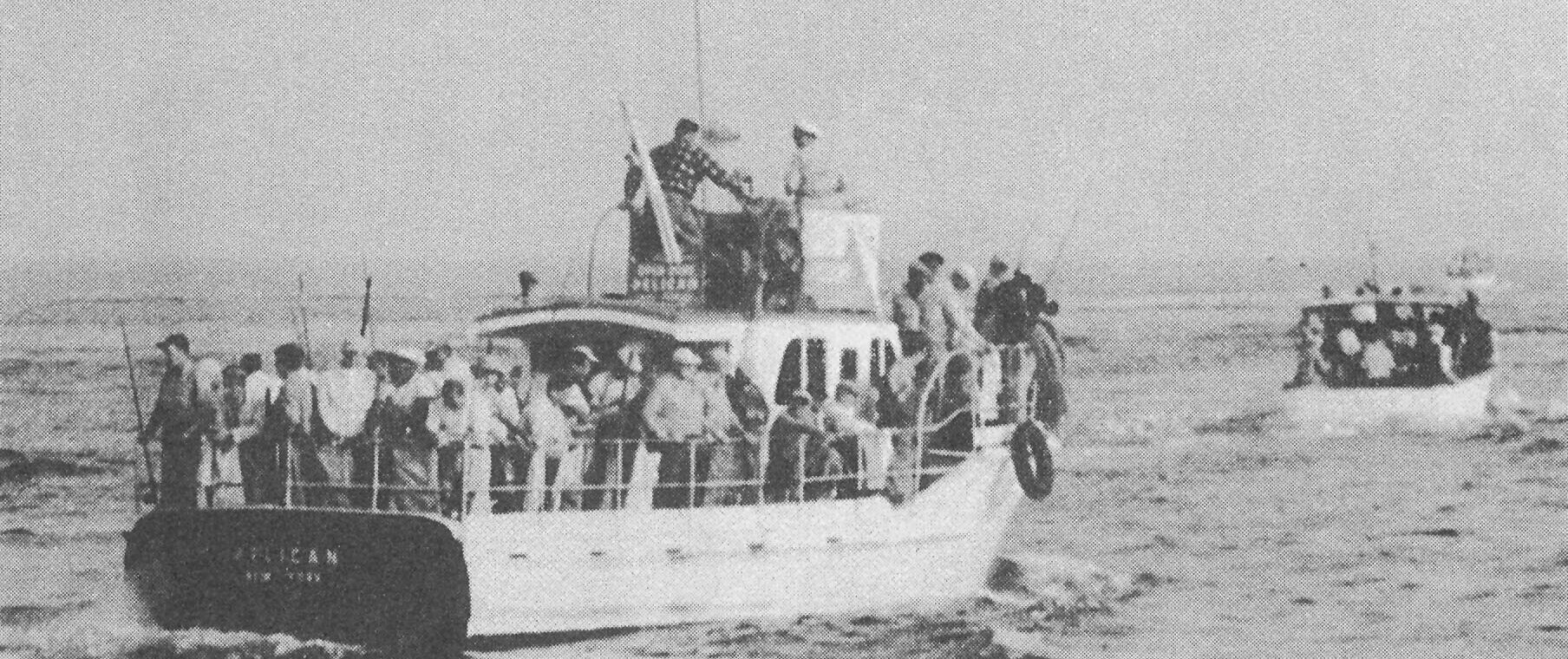On September 1, 1951 tragedy struck about a mile off the coast of Montauk Point. That Labor Day Weekend Saturday dawned sunny and clear, but a sudden and unexpected storm appeared as if from nowhere, mercilessly battering and ultimately capsizing the 42-foot fishing vessel the PELICAN on its way back to the Fishangri-la dock in Fort Pond Bay.
Forty-five of the sixty-four people on board the vessel died, including its captain, Eddie Carroll. Only nineteen survivors were rescued from the ocean. Many of the people on the PELICAN came from the New York City boroughs and metropolitan area, waking early to catch the Long Island Railroad’s “Fishermen’s Special” express train out east to Montauk to spend the day fishing.

At the time of the disaster, there were very few safety regulations imposed on those small fishing vessels that, like the PELICAN, weighed less than 15 tons. Significantly, there was no limit on the number of passengers allowed on board — captains could carry as many passengers as they had life preservers. It wasn’t uncommon for boats to be overloaded, especially on a holiday weekend. And Eddie Carroll was a popular captain. His boat left the dock with about twice as many fishermen as would be allowed today.
What follows was what Tom Clavin, author of DARK NOON: has called “a series of unfortunate events.” The unexpected storm, the overcrowded vessel, the tide, the location of the boat, and one of two engines failing all played a role in causing the PELICAN to capsize, throwing everyone who had been on deck into the water, and trapping those who had taken shelter in the cabin. Of the many passengers who could not swim, only one wore a life preserver. He survived.

A huge rescue effort from other Montauk captains and others in the community allowed 18 people to be saved — one other passenger was rescued by the Coast Guard. The Montauk Yacht Club ballroom was converted to a triage center, and Duryea’s Ice House served as a temporary morgue for the bodies that were recovered. Eighteen people were lost at sea and never found.
The PELICAN disaster led to new safety regulations, as stipulated in a bill known as “H.R. 7952 – An Act to Require the Inspection and Certification of Certain Vessels Carrying Passengers,” which was signed into law by President Eisenhower on May 10, 1956.

VICTIMS OF THE DISASTER:
- Constantin Acevedo
- Isaac Beja
- Lawrence Berger
- Alvin Brown
- John Carlson
- Edward Carroll
- Cynthia Chamades
- Armas Dolk
- Charles Drew
- Solomon Finkelberg
- Victor Finkelberg
- Harold Fried
- Helen Friedel
- John Furness
- George Hermanns
- Harold Hertzberg
- William Hoak
- James Hyslop
- Charles Knight
- Andrew Kolesar
- Robert Lawrence
- Frank Laurenzana
- Raymond Lewis
- Harold Lolli
- Wallace Manko
- Frank Marino
- William Mellardo
- Grover Menton
- Cornelius Norrington
- Patrick O’Brien
- Theodore Ogburn
- Harold Pinckney
- Manuel Ramirez
- Frank Rubano
- Sisinio Salvaterra
- Gordon Sellons
- George Short
- Louis Sigal
- John Stein
- Joseph Stern
- Angelo Testa Sr.
- Nicholas Trotta
- George Wallace
- Edmund Charles White
SURVIVORS:
- Martin Berger
- Antonio Borruso
- Costas Candalanos
- Antonio de Jesus
- Richard Friedel
- Seymour Gabbin
- John Griffin
- Stanley McKeegan
- Stanley Olszewski
- Robert Scanlon
- Renee Sherr
- Max Stein
- Rudolph Stein
- Ben Tasman
- Angelo Testa Jr.
- John Vallone
- Cynthia Zurendorf

